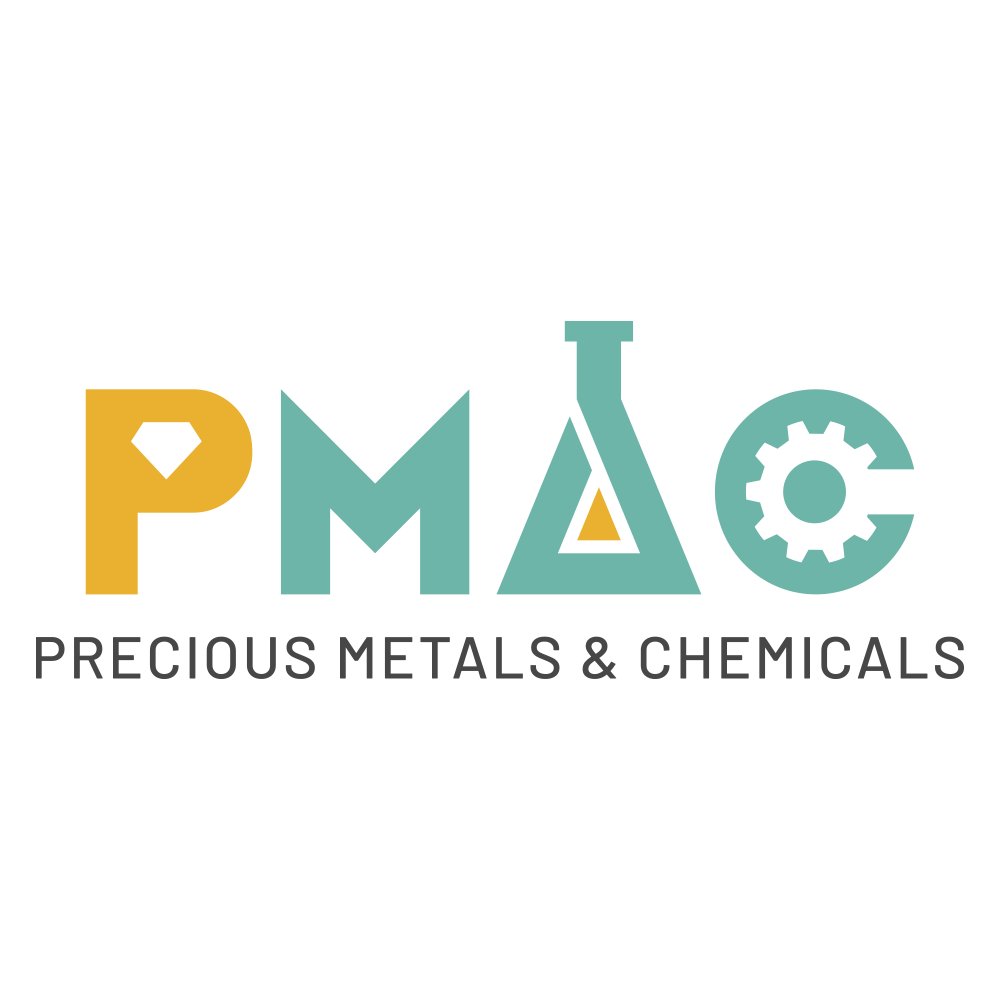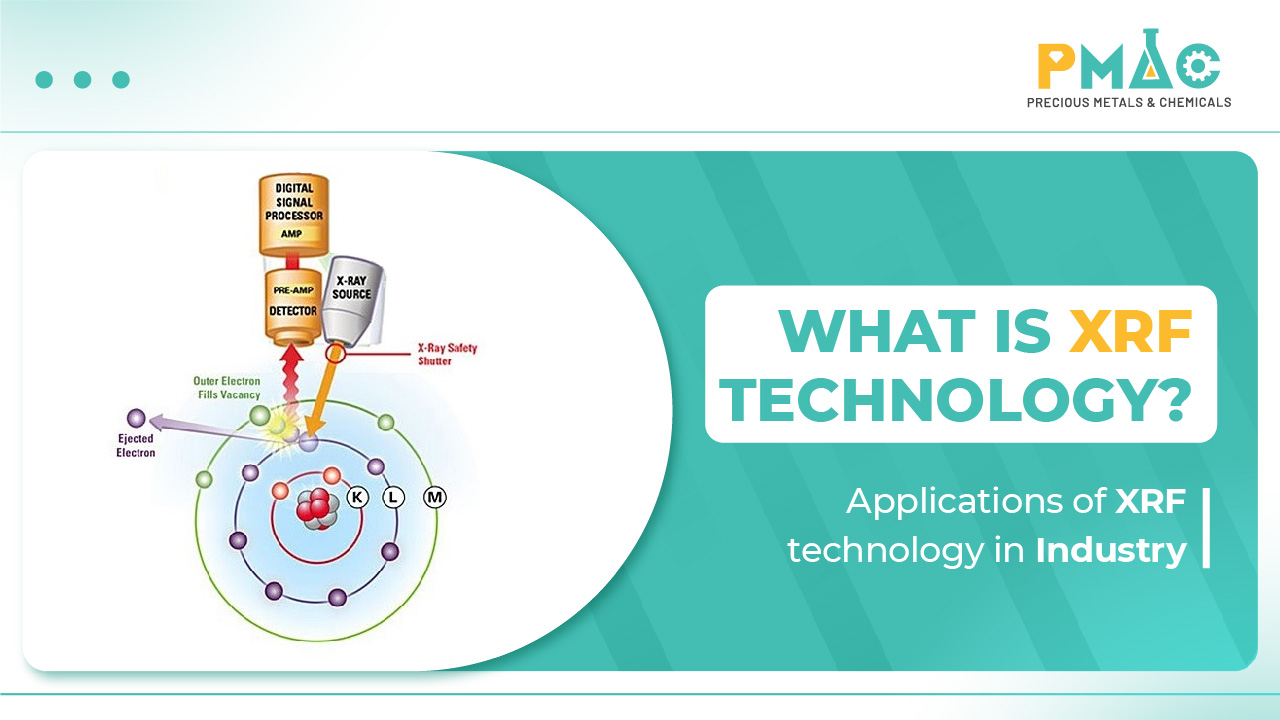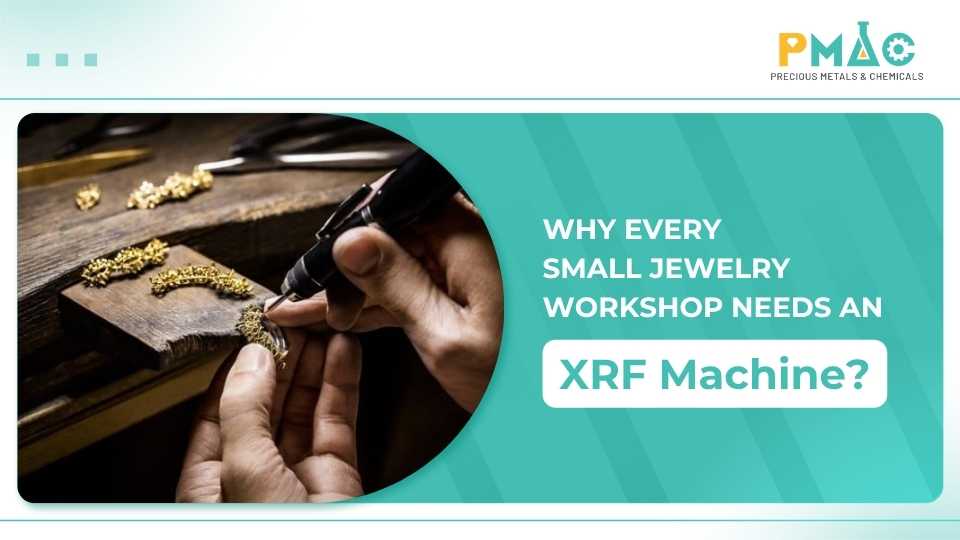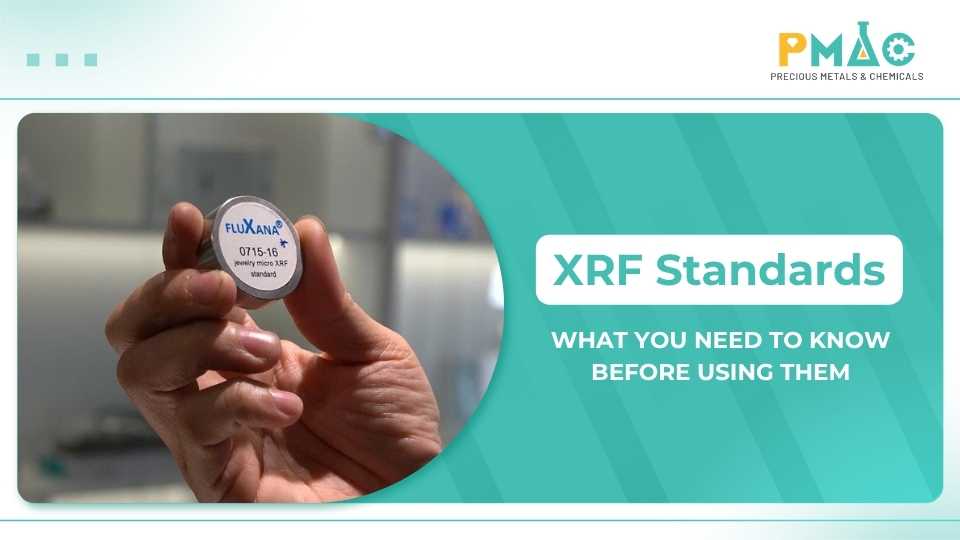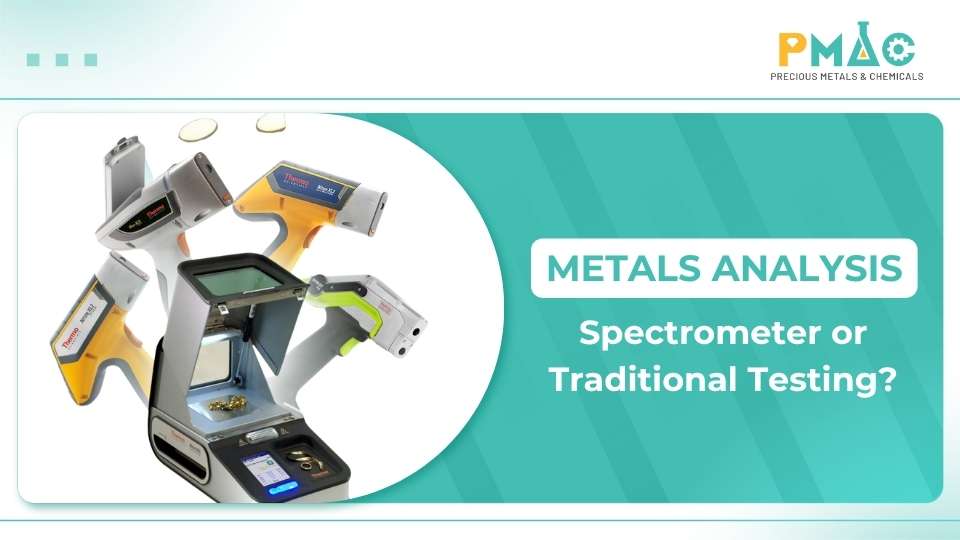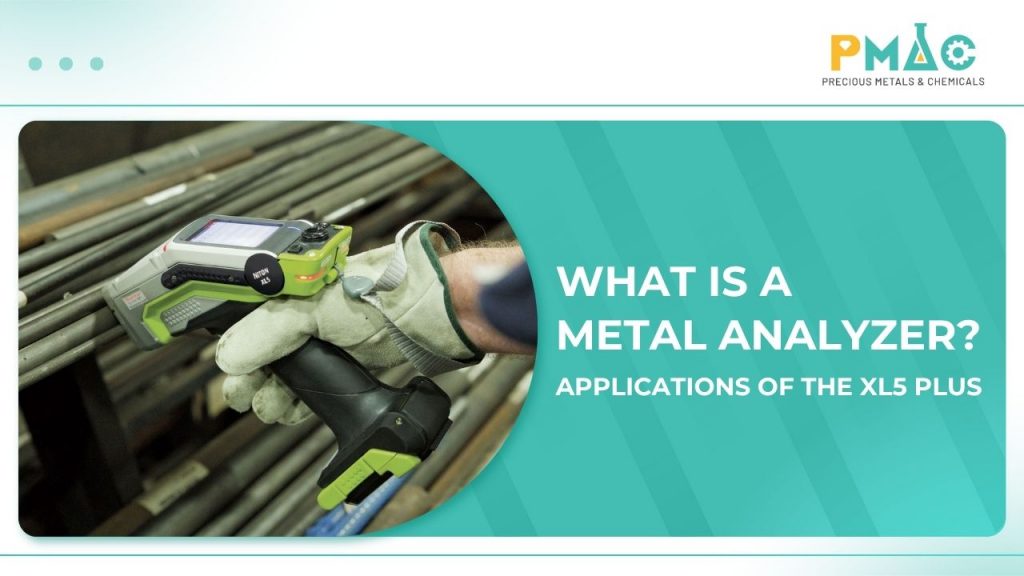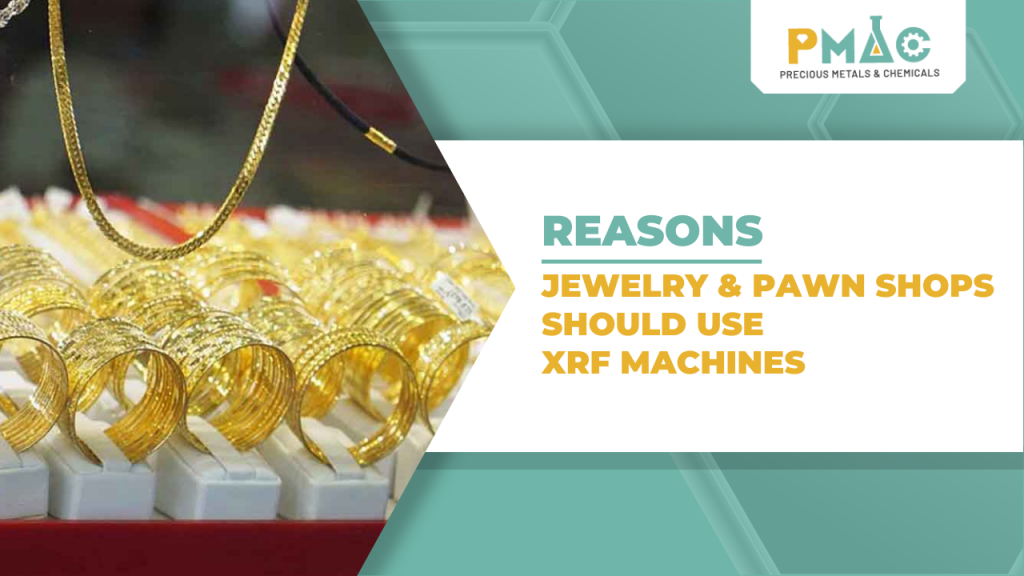In the Industry 4.0 era, the need for material analysis and product quality control is more important than ever. XRF (X-ray Fluorescence) technology stands out due to its ability to provide fast, accurate, and non-destructive analysis. It is widely applied in mining, environmental science, manufacturing, archaeology, and especially the precious metals and jewelry industry.
In this article, PMAC will help you understand the concept and principles of XRF technology, its advantages, applications, and the leading genuine Spectrometers distributor in Vietnam.
I. What Is XRF (X-ray Fluorescence) Technology?
X-ray Fluorescence is a technology used to analyze the chemical composition of materials based on the phenomenon of X-ray fluorescence. When a material sample is irradiated with high-energy X-rays, the atoms within it emit X-rays that are characteristic of each specific element. Based on this fluorescent spectrum, the machine can determine the elemental composition, proportions, and concentrations within the sample.
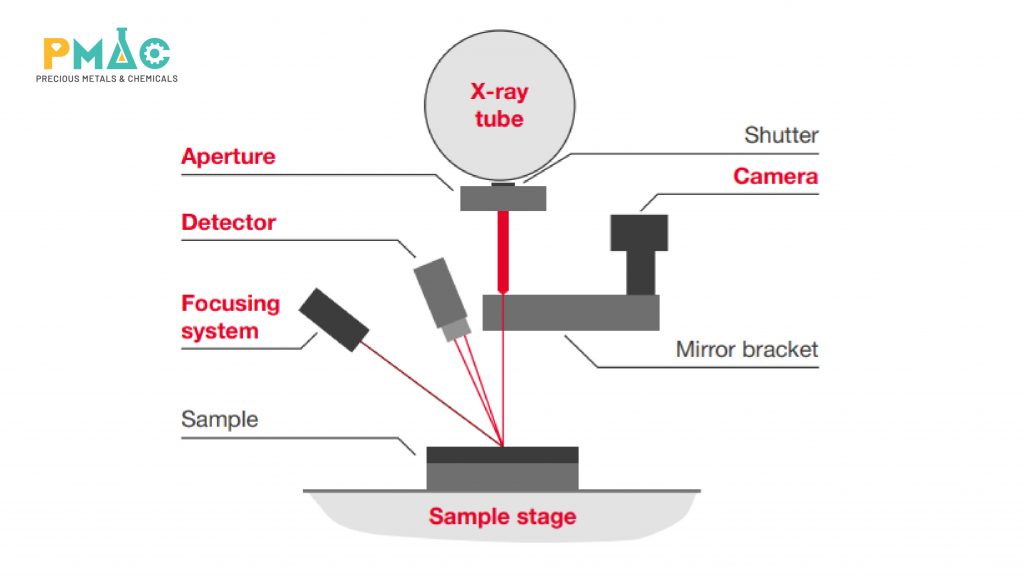
Structure of an XRF analyzer
Developed in the 20th century, XRF technology has now become a standard analytical method in many industries. Its key strengths are its speed, the lack of need for complex sample preparation, and its high level of accuracy.
In the jewelry and precious metals industry, XRF is particularly useful for verifying gold purity (karat), identifying precious alloys, and helping businesses and consumers avoid the risks of counterfeit or low-quality gold.
>> See also: What is an XRF Analyzer? Applications in Modern Jewelry Stores – pmac.asia
II. The Operating Principle of XRF in Gold Testing
The basic principle of XRF technology can be summarized as follows:
- The XRF analyzer emits primary X-rays that strike the sample.
- Atoms in the sample are excited, which dislodges an electron from an inner electron shell.
- As an electron from an outer shell moves to fill the vacancy, the atom releases a characteristic X-ray (fluorescence).
- The XRF detector collects this X-ray spectrum and analyzes it to determine the elements present and their respective concentrations.
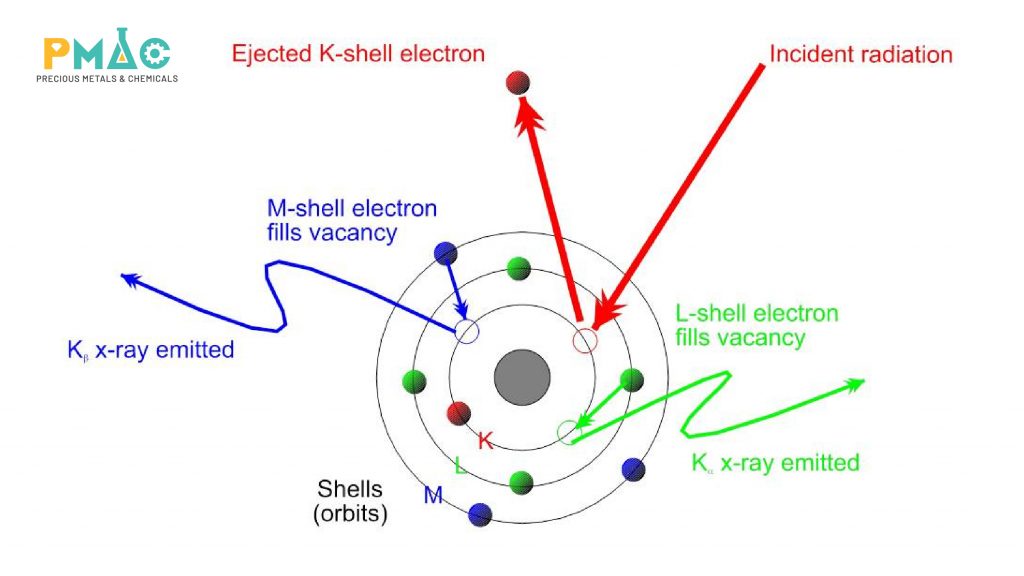
Operating principle of XRF
When testing gold, X-ray fluorescence technology precisely determines the content of Au (Gold), Ag (Silver), Cu (Copper), Pt (Platinum), Pd (Palladium), and other elements in the gold alloy. The analysis results are displayed on the screen within seconds, without requiring any destruction or cutting of the sample, thereby preserving the product’s value.
Example: A gold ring is advertised as 18K (75% Au). An XRF analyzer can quickly verify if it contains the correct percentage of gold. If the measurement shows only 70% Au, both the buyer and seller can immediately detect the discrepancy.
III. Advantages of XRF Analyzers

Advantages of X-ray fluorescence Technology
1. Non-Destructive Analysis
The most outstanding feature of XRF, compared to traditional methods (like fire assay or sample cutting), is that it is completely non-destructive and does not damage the product. Whether it’s gold, alloys, or archaeological artifacts, the sample remains in its original state. This is especially important in the jewelry industry and for heritage conservation.
2. Fast and Highly Accurate
Within just a few seconds, a Spectrometer can provide an elemental analysis with high precision, often accurate to parts per thousand. With advanced technology, many current XRF models can measure more than 30 different elements simultaneously.
3. Simple and Easy Operation
XRF analyzers are intelligently designed with an intuitive user interface. The user simply needs to place the sample in the measurement chamber, press the start button, and wait for the results to be displayed. It does not require a highly specialized technician; any staff member can be trained to use the machine after a basic orientation session.
IV. Applications of XRF Technology
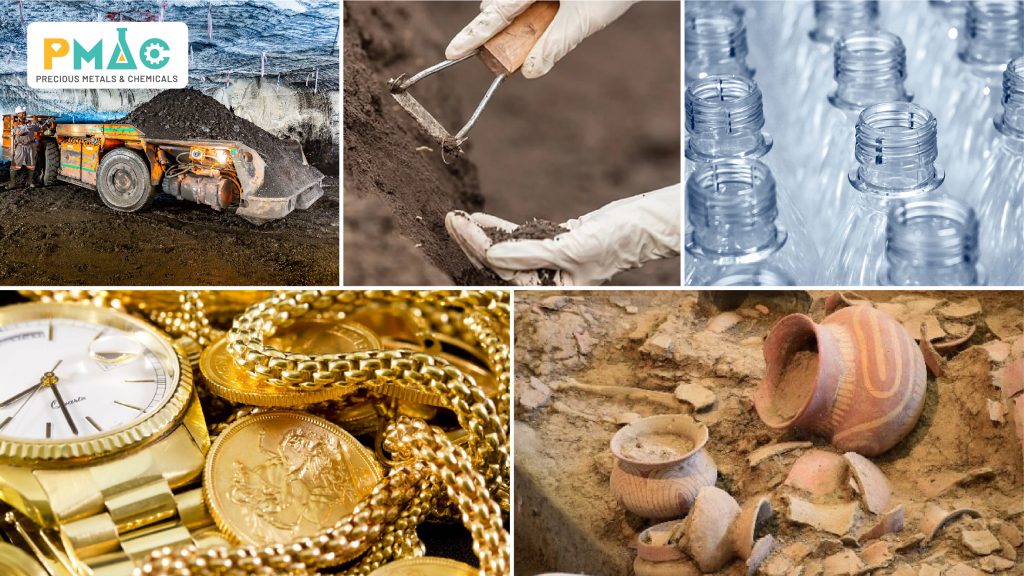
Applications of XRF Analyzer
XRF technology is proving its crucial role in numerous industrial and scientific fields. Many of the world’s leading analysis brands have developed diverse lines of XRF analyzers specialized for specific practical needs.
1. Mining and Metallurgy
In mining, X-ray fluorescence Technology is used to identify the composition of ores and quickly assess mineral quality in the field. In metallurgy, XRF helps inspect alloys and determine the ratios of precious metals like gold, silver, and platinum, as well as base metals such as iron, copper, and aluminum.
Typical Solution: Lightweight, high-performance handheld XRF analyzers are designed for the mining and metallurgy sector. This equipment allows engineers to analyze ore samples instantly, supporting rapid decision-making for extraction and processing.
2. Environmental Analysis
Environmental agencies use XRF to detect lead, mercury, arsenic, cadmium, and other pollutants in soil, water, and air. Thanks to its rapid analysis speed and lack of need for complex sample preparation, XRF has become a critical tool for environmental monitoring.
>> See also: XRF Product Line for the Recycling Industry
3. Product Quality Control
In the manufacturing industry, XRF is applied to check the quality of many types of materials:
- Cement: Ensuring the correct ratios of Ca, Si, Fe, and Al to achieve the required strength.
- Glass: Checking for impurities that affect transparency.
- Polymers and Plastics: Detecting additives and heavy metals.
This allows businesses to maintain stable product quality and comply with international standards.
4. Gold Quality Assurance in the Jewelry Industry
The jewelry industry is one of the strongest proponents of XRF applications. X-ray fluorescence Technology helps:
- Accurately measure gold purity (10K, 14K, 18K, 24K, etc.).
- Identify alloy compositions: detecting gold mixed with copper, silver, or zinc.
- Prevent fraud: distinguishing between real and fake gold, protecting consumer interests.
Typical Solution: Analyzers from the SpectraX brand, such as the SpectraX 20 and SpectraX 25, are specialized benchtop XRF machines for the jewelry industry. This equipment features a safe measurement chamber and simple operation, making it particularly suitable for gold shops, assay centers, and jewelry manufacturers. It is an indispensable tool for jewelry stores, assay centers, and consumers who want to purchase gold safely.
For even more in-depth analysis, the Spectra 55 XRF analyzer can measure the thickness of up to 5 plating layers, with a plating measurement accuracy of up to 0.001μm. These outstanding features make the SpectraX 55 the perfect tool for checking metal coatings and controlling quality for businesses.
>> See also: TOP MOST POPULAR METAL ANALYZERS TODAY
5. Archaeological Research
In archaeology, XRF machines are used to analyze ancient artifacts such as coins, metal tools, and ceramics. By determining the chemical composition, researchers can learn about the origin, manufacturing techniques, and even the trade and cultural exchanges of ancient times. Most importantly, XRF analysis is non-destructive, preserving the full value of historical artifacts.
V. PMAC – A Reputable Distributor of Genuine XRF Analyzers
To fully leverage the effectiveness of X-ray fluorescence technology, choosing a reputable distributor is crucial. In Vietnam, PMAC is a pioneer in supplying and transferring genuine XRF analyzers from the world’s leading brands.
- Reputable International Partners: PMAC is the official authorized distributor for many famous XRF technology manufacturers.
- Full-Service Package: PMAC not only supplies the machines but also provides solution consulting, user training, and long-term warranty support.
- Long-Term Experience: With many years of operation in the precious metals, gemstone, and industrial analysis sectors, PMAC deeply understands the needs of Vietnamese customers.
- Credibility and Transparency: We provide genuine products with complete Certificates of Origin (CO) and Quality (CQ), ensuring absolute peace of mind for our customers.
From gold assay centers and mining companies to manufacturing plants and research institutes, PMAC has the right XRF solution to help improve efficiency and product quality.
Conclusion
X-ray Fluorescence technology has become an indispensable tool in many industries. With its ability to provide fast, accurate, and non-destructive analysis, XRF offers outstanding value in mining, quality control, environmental protection, archaeological research, and especially in gold and precious metal verification.
In Vietnam, PMAC is proud to be a reputable distributor of genuine XRF analyzers, partnering with businesses on their journey of technological innovation and sustainable development.
If you are looking for a fast and reliable XRF analysis solution, please contact PMAC for a detailed consultation.
Contact PMAC today for expert consultation and exclusive offers!
PMAC Joint Stock Company
Address: High-Tech Center, 4th Floor, HUTECH Building, D1 Street, High-Tech Park, Long Thanh My Ward, Thu Duc City, Vietnam
Website: https://pmac.asia/
Hotline: 0908727235
